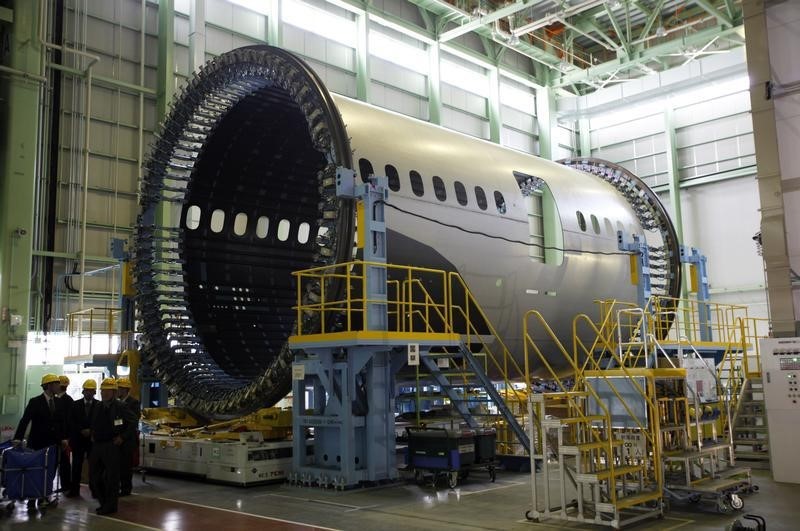(Bloomberg) -- U.S.factory output fell in January on the production halt for Boeing (NYSE:BA)Co.'s 737 Max, showing how the grounding of the troubled plane will weigh on manufacturing and the broader economy in coming months.
Manufacturing output declined 0.1% from the prior month, matching projections, after a downwardly revised 0.1% gain in December, according to Federal Reserve data released Friday. Total industrial production, which also includes mines and utilities, fell 0.3% as unusually warm weather held down energy output.
Key Insights
- While the Boeing stoppage will likely continue to hit the economy throughout the first half of the year, factory output excluding aircraft and parts rose 0.3% in January, signaling some stabilization in other manufacturing sectors. But the coronavirus outbreak is also expected to weigh on supply chains and demand in the coming months.
- Production of aerospace products and parts fell 9.1% in January, reflecting the 737 Max production halt. Boeing received zero orders for all aircraft in January, suggesting production will stay subdued.
- Together with consumption data, the factory output figures indicate the U.S. economy is off to a modest start this year. A separate report Friday showed that while retail sales gained in January, a narrower measure -- which some analysts see as a better gauge of underlying demand -- was sluggish.
- Utility output declined 4% from the prior month while mining production increased 1.2%. Production of motor vehicles and parts increased 2.4% for the second gain in three months; excluding cars, manufacturing fell 0.3% after a 0.5% increase in December.
- Capacity utilization, measuring the amount of a plant that is in use, fell to 76.8% -- the lowest since September 2017 -- from 77.1%.
- Sectors with declines in January included machinery and consumer goods, while computer and electronic products along with fabricated metal gear showed gains.
- The Fed's monthly data are volatile and often get revised. Manufacturing makes up three-fourths of total industrial production and about 11% of the U.S. economy.
